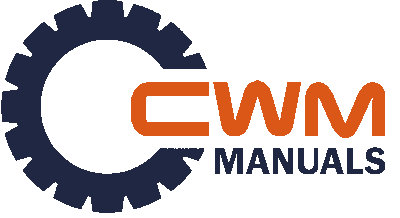As a chainsaw owner, you know that proper maintenance is important for the efficiency and safety of your tool. One of the most important factors to consider when maintaining your chainsaw is the proper tightness of the chain. A chain that is too tight or too loose can cause a variety of issues, including overheating, decreased performance, and an increased risk of injury.
The Importance of Proper Chain Tension
In this article, we’ll go over the importance of proper chainsaw chain tension and provide you with some effective methods to check and adjust it.
Table of Contents
Why Proper Chainsaw Chain Tension Matters
Proper chainsaw chain tension is vital for optimal chainsaw performance, safety, and efficiency. An overly tight chain can cause excessive friction, leading to overheating of the engine, guide bar, and chain. This can result in damage to the chainsaw and reduced performance. On the other hand, a loose chain can cause excessive wear, leading to early chain failure and an increased risk of injury.

Additionally, a loose chain can cause the chainsaw to kick back, which can be dangerous for the operator. Chainsaw kickback occurs when the moving chain at the tip of the guide bar comes into contact with an object, causing the guide bar to kick back toward the operator. This sudden movement can cause the operator to lose control of the chainsaw, leading to serious injury.
Checking and Adjusting Chainsaw Chain Tension
To ensure your chainsaw is operating safely and efficiently, it’s crucial to check and adjust the chain tension regularly. Two effective methods to check chainsaw chain tension are the Snap Test and the Bar Tip Test.
Snap Test
To perform the Snap Test, place the chainsaw on a stable surface with the engine not running. Use your index finger and thumb to grasp the chain on top of the guide bar. Pull the chain up towards the ceiling, and if it’s correctly tensioned, you should be able to pull it slightly away from the guide bar, and it should snap back into place when released.
Bar Tip Test
To perform the Bar Tip Test, first, loosen the guide bar nut on the side of the chainsaw, and then lift the guide bar’s tip up and down slightly. When raising the guide bar as far as possible, there should be no sag or droop in the chain. If there is, you will need to tighten the chain to remove any slack.
Adjusting Chainsaw Chain Tension

If your chainsaw chain is too loose or tight, you will need to adjust the tension. To adjust the chain tension, first, loosen the bar nut or nuts on the side of the chainsaw. Then, turn the chain tension screw in a clockwise direction to tighten it or counterclockwise to loosen it. Be sure not to overtighten the chain, as this can lead to excessive early chain wear and increase the risk of injury. Finally, retighten the bar nut or nuts.
Replacing a Damaged Chain

It’s important to note that operating a chainsaw with a damaged chain is not only dangerous but can also lead to poor performance and further damage to the chainsaw. If you find that your chainsaw chain is damaged, it’s essential to replace it with a new one.
Electric Chainsaws
Tightening the chain of an electric chainsaw is no different from tightening the chain of a gas-powered chainsaw. Locate the bar nut or wing nut on the side of the chainsaw and loosen it. Then, find the tensioner adjustment screw or adjustment wheel, turn the tension screw or adjustment wheel clockwise to tighten the chain or counterclockwise to loosen it, and finally, retighten the bar nut or wing nut on the side of the chainsaw.
FAQ
What happens if the chainsaw chain is too loose?
If the chainsaw chain is too loose, it can cause damage to the chainsaw drag links, reduce chainsaw performance, and increase the risk of injury. The chain may also come off the guide bar, which can be dangerous.
What happens if the chainsaw chain is too tight?
If the chainsaw chain is too tight, it can cause the engine to overheat, leading to damage to the guide bar and chain. It can also cause excessive early chain wear and increase the risk of injury to the chainsaw operator.
How often should I check the chainsaw chain tension?
It’s recommended to check the chainsaw chain tension before and after every 5-10 minutes of use. It’s also essential to check the chain tension if you notice any decrease in the chainsaw’s performance.
What is the Snap Test and Bar Tip Test for checking chain tension?
The Snap Test involves pulling the chain up towards the ceiling and checking if it snaps back into place when released. The Bar Tip Test involves lifting the guide bar’s tip up and down slightly to check for sag or droop in the chain
What is the ideal chain tension for a chainsaw?
The best chain tension is achieved by ensuring the chain is snug against the guide bar while still loose enough to be pulled away from the guide bar with two fingers and snap back into place when released.
Conclusion
Proper chainsaw chain tension is crucial to ensuring the efficient and safe operation of your chainsaw. A chainsaw chain that is too tight or too loose can lead to a range of issues, including damage to the chainsaw, decreased performance, and an increased risk of injury. Therefore, it’s essential to check and adjust the chain tension regularly using the Snap Test or Bar Tip Test.

